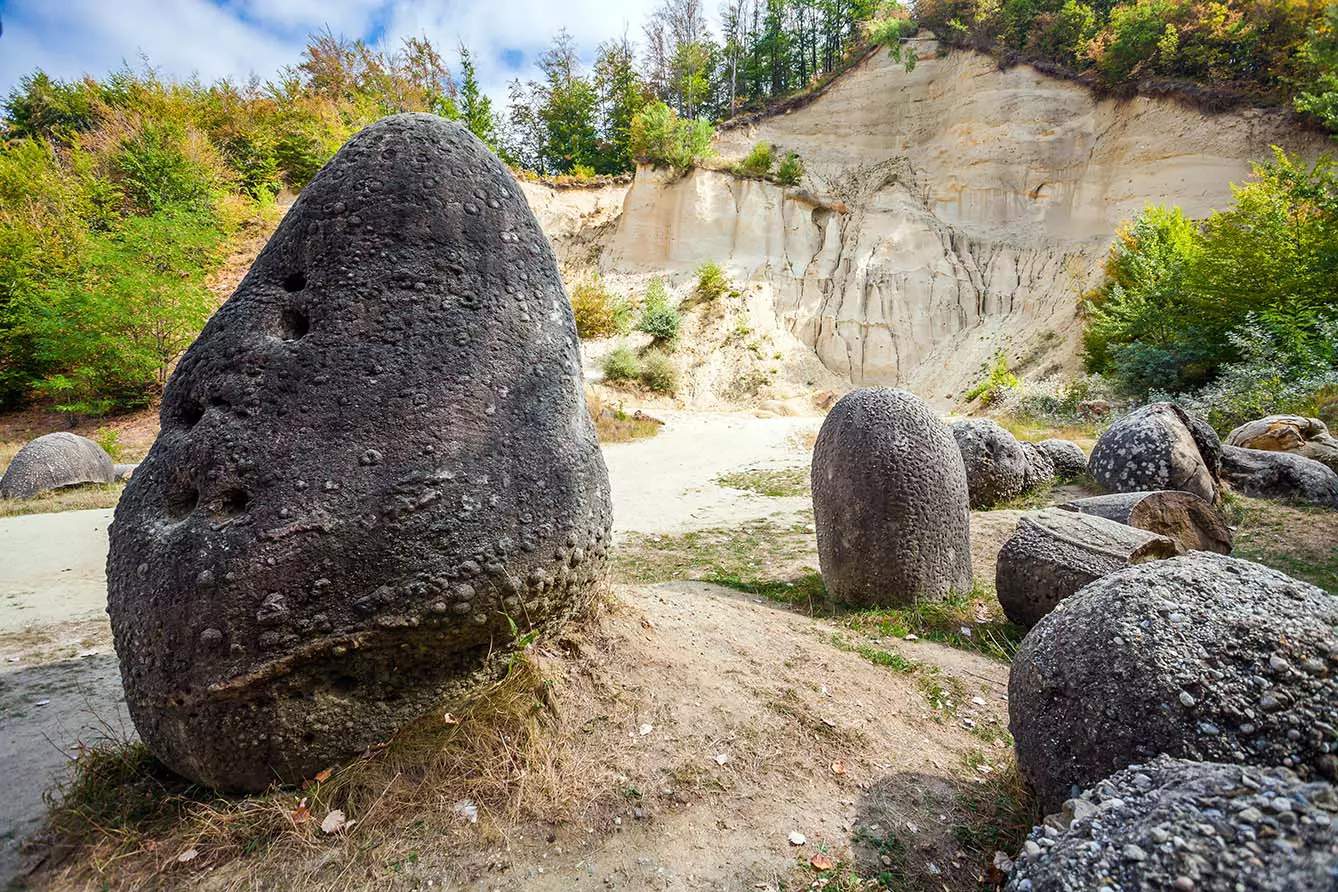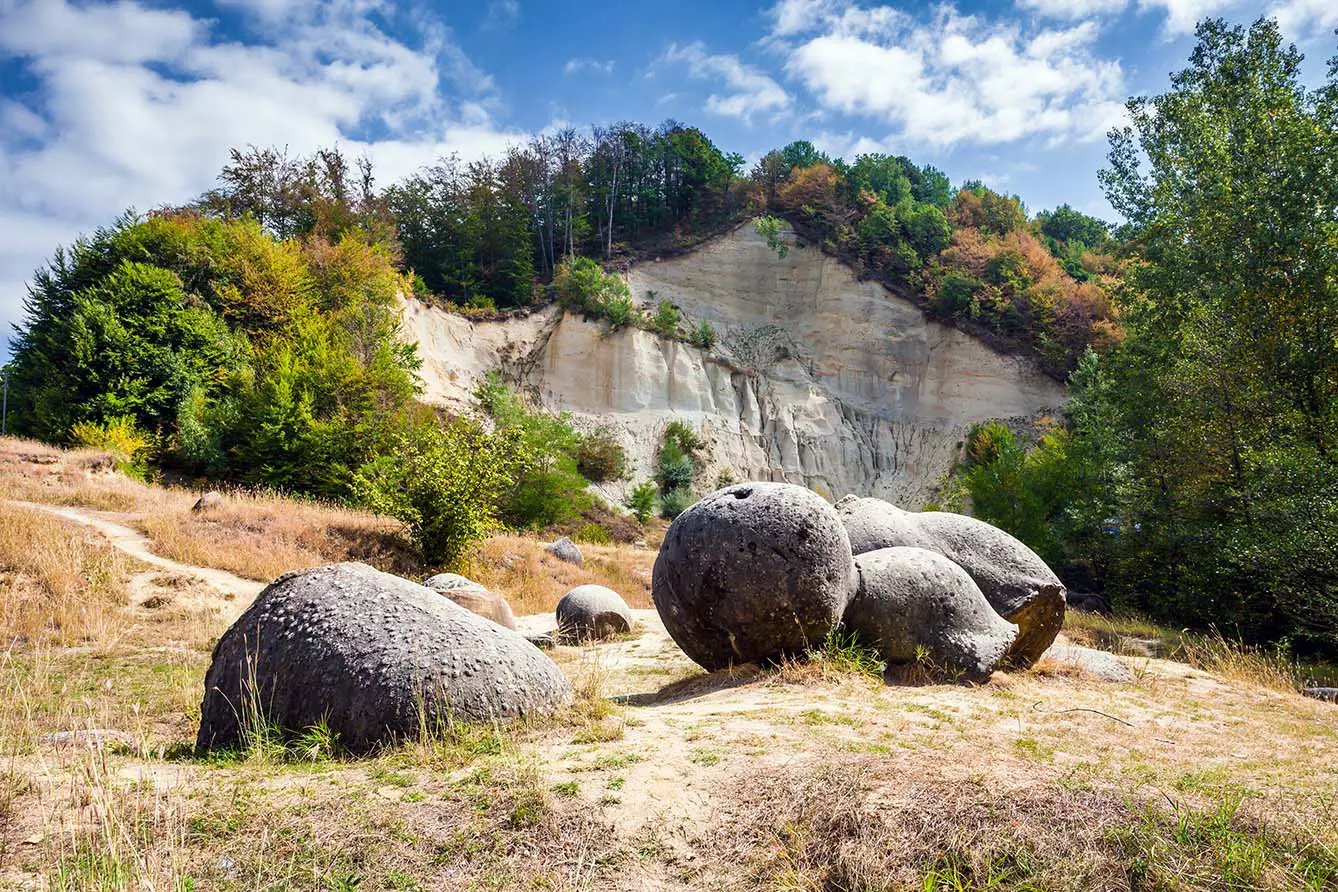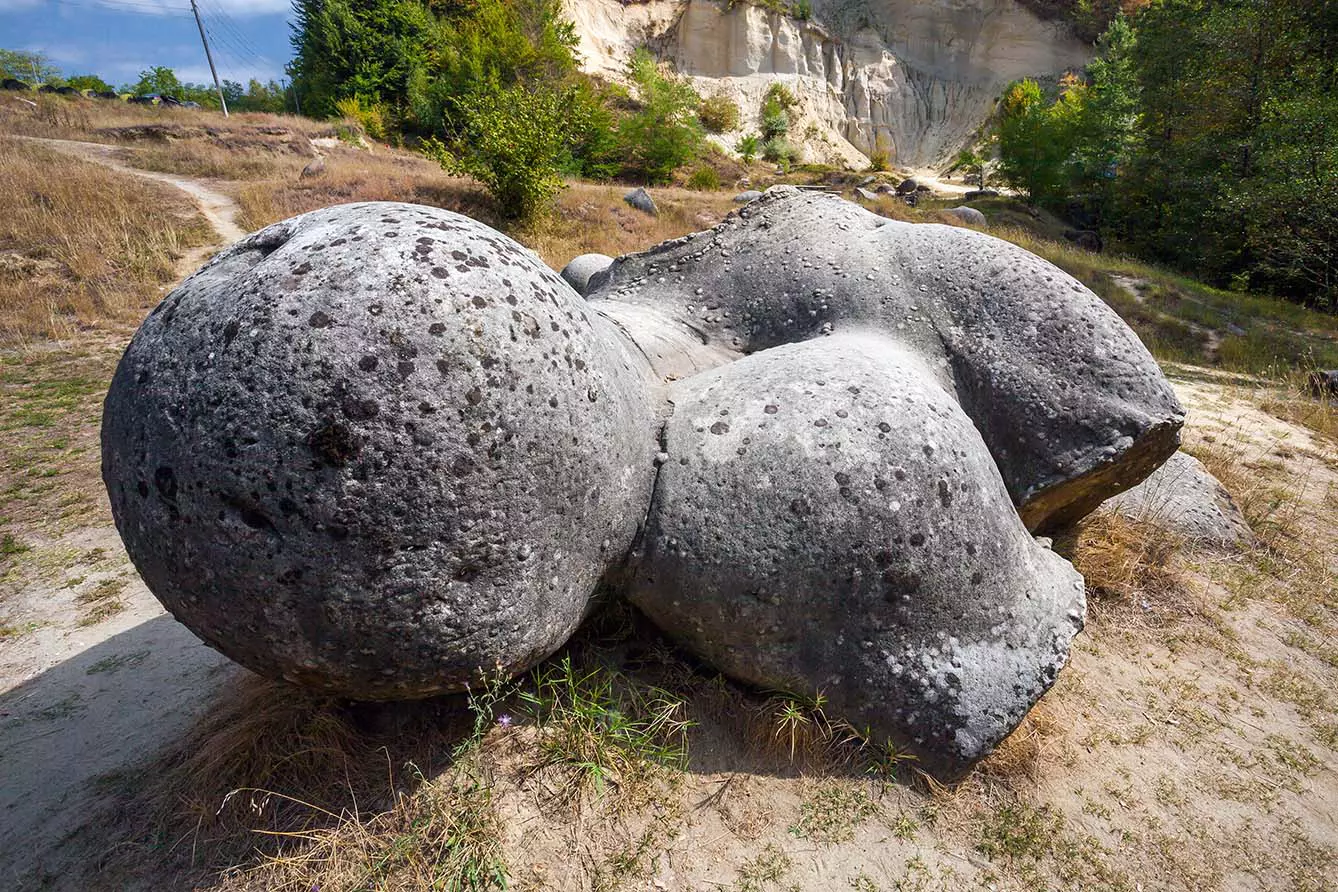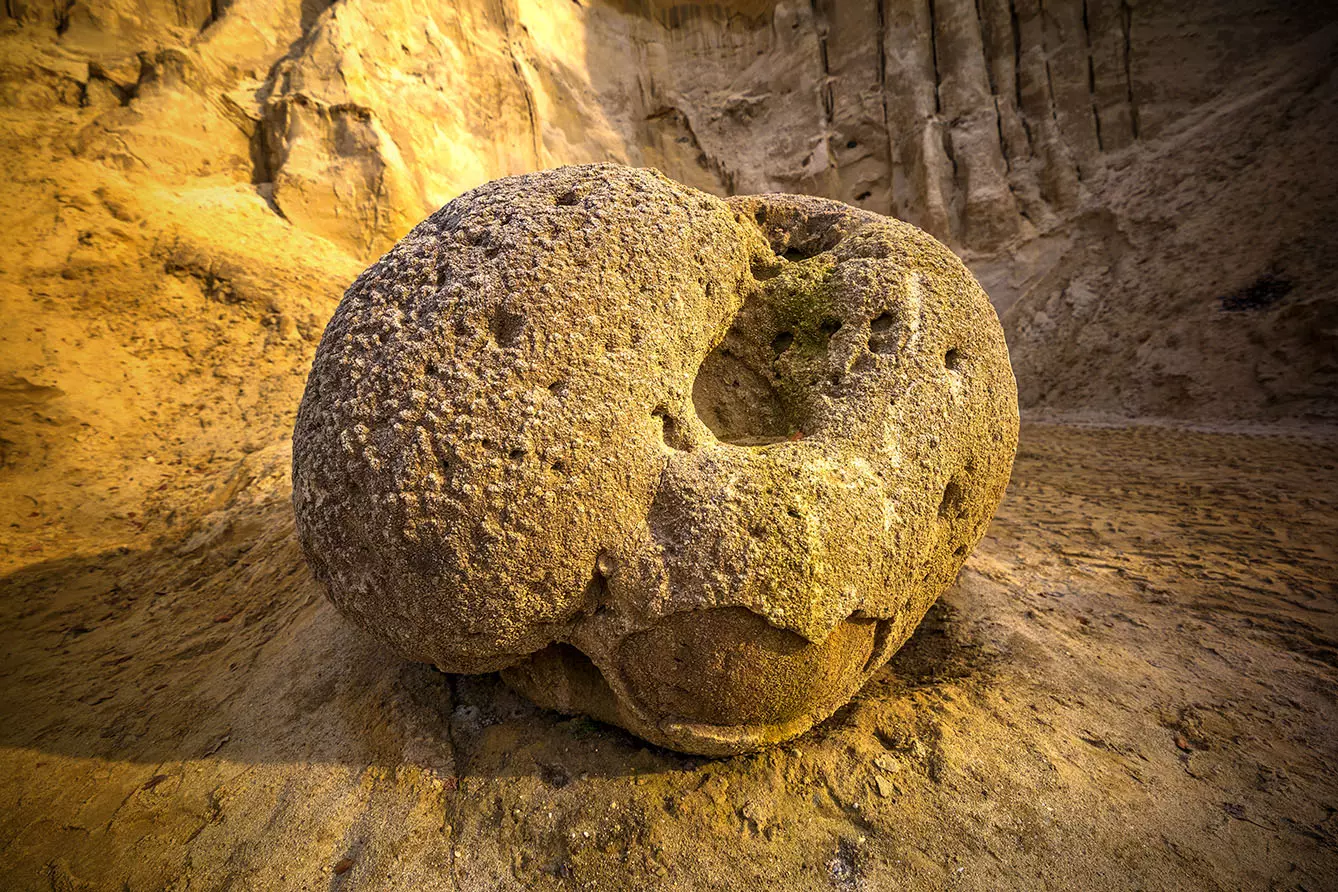It’s a known fact that rain helps flowers and plants grow. But in Romania, it makes stones grow, too! Rocks varying in size from tiny pebbles to enormous stones seemingly appear overnight, springing up like mushrooms after the rain. They grow out of nowhere, move around, and often multiply all by themselves. What is truth, and what is fantasy in this mystical realm where stones appear to live a life of their own?



Throughout the years, many have called them dinosaur eggs and even regarded them as remains of extraterrestrial possessions. They appear overnight and can take the shape of perfect spheres. They “multiply,” and people have sworn to have seen them move around and change places. It’s no wonder that, despite strong and vehement scientific explanations, some find it hard to believe that the stones are not the result of mystical fantasies. They may look and act like they’re out of this world, but their behavior is the result of a unique geological phenomenon.
Trovanți, a natural phenomenon
Scientifically, they are known as trovanți, the Romanian term for the German word “Sandsteinkonkretionen,” which means cemented sand. Formed by the fusion between sand layers and calcareous water, the stones come from what, ages ago, was a delta in the region of Costesti and a beach in the region of Buzău. The delta and shore may be long gone, but their remains continue to shock the world millions of years later.
We now know how they appeared, but how do we explain their unique behavior? Is there a grain of truth to the stories told by the locals, or is it just an attempt to promote the site?
It’s already established – there are not the types of rocks you can find on your side road (although many locals have taken trovanți to place in front of their homes in the hopes of bringing good luck). Just as their formation is the result of geological and chemical processes, so is their behavior.
While it is true that the stones grow on their own, much to the disappointment of many, it has nothing to do with outer space interference or mystical realms. It has to do with water and how the stones absorb it, creating, every 1000 years or so, an extra layer of 5 to 6 centimeters.
A grain of truth in the fairy tales
But the claims of the locals and of the visitors who are ready to bet the stones changed shapes and sizes overnight are not entirely false either. It’s just that, instead of overnight, it’s actually after rain. Due to porous layers that absorb water each time these stones come into contact with snow or rain, they appear to grow due to the accumulated drops, making it look like the rocks have increased in size.
Similarly, parts of the trovanți are prone to fall off, and the corrosion process makes it look as if the stone has multiplied. These fantasy-looking rocks are, at the core, the result of years and years of segmentation and erosion. The show they’re putting on daily, acting as if they are living a life of their own, has gathered tens and hundreds of visitors throughout the years. In Vâlcea, the site has been declared a Nationa Reserve Museum in 2005, and in Buzău, the same phenomenon was included in the Ținutul Buzăului Geopark.







